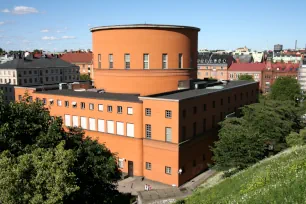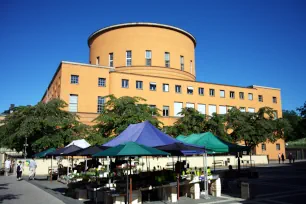The Stadsbiblioteket, Stockholm’s Municipal Library, is one of the city’s architectural masterpieces. It was built in the 1920s by Gunnar Asplund in the so-called Nordic Classicist style.


Stockholm is best known for its many magnificent historic buildings in the old town that date back to the sixteenth and seventeenth centuries, but two of the city’s most influential buildings were erected in the early twentieth century: the city hall and the public library. Both buildings heralded a new architecture style that is now known as modernism.
Architecture
The iconic building, which opened in 1928, is seen as a bridge between nineteenth-century neoclassicism and the functionalist architecture that became popular in the 1930s. The structure of the building is classicist, with a symmetrical layout which consisted of a U-shaped building with three wings set around a large cylindrical reading room. In 1932 a fourth wing was added, resulting in the current rectangular layout. The original plans called for a large glazed dome instead of the tall cylinder that now characterizes the library building.
After completing the library, Asplund would become one of the proponents of the functional style. The lack of detail and absence of the classical orders in the Stadsbiblioteket shows Asplund was already leaning towards the new modernist architecture, where the form of the building is defined merely by its function.
The Building
The original brown-red colored building is now painted in an eye-catching orange. While the exterior decoration is minimal, it is not totally devoid of ornamentation. Both the main three-story building and the cylindrical tower are decorated with a small frieze. And a wide staircase leads to the monumental entrance portal.

Inside, the building is decorated with reliefs created by Ivar Johnsson and wall paintings by John Blund and Hilding Linnquist. Asplund himself designed much of the lighting and furniture. Also of note are the sculpted door handles and the drinking fountains, designed by Nils Sjögren.
The highlight of the building is the central rotunda. The walls of the first three floors of the room are completely covered with bookshelves. Above, the wall of the rotunda is painted white. The room has a special atmosphere due to the tall ceiling and the natural light that enters the rotunda through the narrow mullioned windows.

